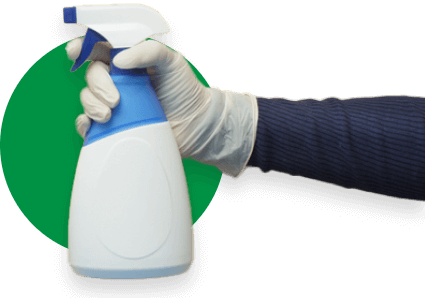Okay, the economy is in a rough state. We’re seeing costs fluctuate wildly for just about everything. Maybe you just started a cleaning business or you’re trying to keep your existing cleaning business going. Either way, you might be at a loss for how to price your cleaning services, without ending up at a loss.
Here, we’ll bring you up to speed on commercial cleaning service pricing strategies, charging for different services, other pricing factors, and how to keep new contracts flowing through your business pipeline. Stay till the end for the answers to all your FAQs.
Pricing Strategies for Your Commercial Cleaning Business
Before we break everything down, here are some principles to consider when deciding on a payment structure for your commercial cleaning business:
- Transparency- You want to build trust and rapport to turn new clients into long-term customers. So don’t cover up the truth about your prices and surprise clients later with hidden fees.
Instead, demonstrate your unique value and selling points as a cleaning business, because you know your services are worth the cost.
- Flexibility- Give clients some wiggle room in what services they do and do not want, and charge accordingly.
Also, offer lower rates for more frequent cleaning jobs and sensible discounts for referrals, brand-new clients, etc. Promotions like these sacrifice some of your short-term profits for long-term gains.
- Flat Fee vs. Square Footage vs. Other Pay Structures- Depending on your individual commercial cleaning business, some pricing strategies might be more advantageous than others.
If you plan on charging by the square foot, it should come out to around $0.11/sq. ft. It’s common to use a sliding scale, asking $0.09-$0.17/sq. ft. up to 12,000 sq. ft., and $0.04-$0.12/sq. ft. up to 40,000 sq. ft.
Alternatively, it might benefit you to have flat rates, for example, $500-$800/month for a small office up to $2,000-$5,000/month for very large offices.
How to Charge Clients for Various Types of Cleaning Services
Here’s a breakdown of reasonable prices to charge clients for various kinds of cleaning services:
| Janitorial Cleaning: Janitorial services are a slightly different job, and prices vary from $0.15-$0.25/sq. ft. A client may request individual extra tasks from janitorial services, which could be priced as follows: -Appliances: $10-$40/appliance -Floor stripping/waxing: $0.30-$0.50/sq. ft. -Machine-cleaning tile or concrete floosrs: $0.12-$0.21/sq. ft -Buffing: $0.04-$0.12/sq. ft. -Spot and stain cleaning: at least $20 per small spot Deep Cleaning: Those occasional deep cleans will vary greatly in cost depending on the type of space, its features, commercial cleaning scope, and intensiveness. But on average, commercial deep cleanings for under 1,000 square feet is $120, increasing by another $90 for every additional 1,000 square feet. Kitchen Cleaning: Smaller, break room-type kitchens may cost $35-$61 for the whole room or up to $3/sq. ft. Large commercial kitchens tend to cost more to clean, with additional costs if there are any specialized tasks like kitchen hood cleaning needed. Window Cleaning: You should price windows separately, charging $2-$11 per window pane, depending on the size and height of the windows. Carpet Cleaning: There are different methods of carpet cleaning, such as steam cleaning, shampooing, encapsulation, hot water extraction, and stain treatment. Depending on the type of cleaning required, it may cost $0.08-$0.25/sq. ft. or up to $0.40/sq. ft. Floor Cleaning: Let’s itemize by different hard flooring materials and procedures: -Concrete/tile/grout scrubbing$0.12-$25/sq. ft. -Floor polishing/waxing$0.20-$0.50/sq. ft. -Marble/terrazzo refinishing$1.50-$4.00/sq. ft. Regular Disinfection: Commercial cleaners often have a tiered pricing scheme for regular disinfecting, too. On average, standard disinfection is $0.25-0.38/sq. ft. up to 7,000 square feet, $0.05-$0.12/sq. ft. up to 20,000 square feet, and $0.09/sq. ft. up to 100,000 square feet. |
Four Factors to Consider When Pricing Commercial Cleaning Services
Your commercial cleaning service prices should leave you with ample profit margins after you pay for labor, resources, and insurance. So strategically calculate your prices based on these determining factors:
| Building Type, Size, and Rooms: The type of commercial space and rooms play an important role because these factors impact the amount of work, staff, and resources that go into cleaning the space. Rates per square foot are one of the more common pricing schemes, especially for larger offices. You might charge more per square foot for smaller offices to cover the base amount of effort for cleaning small spaces and cramped layouts. Adjust for the amount of kitchen/break room space and restrooms, because they’re more demanding to clean. Frequency: When you clean a certain commercial space often, each visit takes less work, so you might charge less per cleaning. On the other hand, infrequent or one-time cleanings often have more cleaning to do, meaning more effort and costs. Resources and Cleaning Utilities: Factor in all transportation costs, cleaning products, supplies, equipment, and maintenance. Your costs of doing business might be going up these days. It may slightly increase your commercial cleaning prices unless your business and profits are growing fast enough to cancel out your operating costs. Labor Costs and Insurance: If you have employees, you have to be able to pay their wages, plus any related taxes, overtime, benefits, and liability insurance. It’s important to be insured because there are occupational hazards in the cleaning industry. |
How to Keep Your Commercial Cleaning Companies Pipeline Full
Sure up your commercial cleaning company’s future and counteract those seemingly inevitable increases in operating costs. The best way to do it is to constantly upscale your business as much as you can sustainably.
This means, you have to focus on efficiently feeding your pipeline towards new client contracts. One of the most reliable ways to gain more commercial cleaning contracts as a budding or small business is to become a subcontractor.
Then, a more established company can handle all the business technicalities and provide you with a pipeline of new clients. Contact Dallas Janitorial Services if you’re interested in janitorial subcontractor opportunities in the DFW area.
Frequently Asked Questions About Commercial Cleaning
How do you quote an office cleaning job?
Before providing an office cleaning quote, you should do an on-site walkthrough and consultation about the services and their costs.
What is the profit margin for commercial cleaning?
The average commercial cleaning company profit margins land between 10% and 28%.
How much should I charge for cleaning?
Charge enough to cover your labor, resource, transportation, insurance, and other operating costs with healthy profits left over.
How much should I charge for one off cleaning?
It depends on the factors above, but you’ll likely charge a little extra for one-time cleanings because they tend to be more labor-intensive and less efficient business-wise.
How do you determine your cleaning prices?
Do you charge a flat rate, by the square foot, or another pricing structure? Did you learn about anything you could be doing differently for your commercial cleaning company?
If you’re considering becoming a vendor, contact us at Dallas Janitorial Services for more information.







